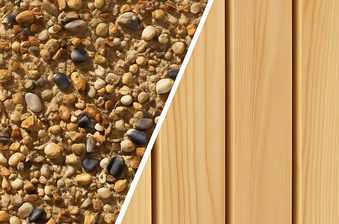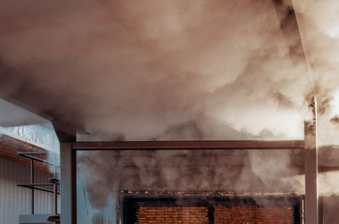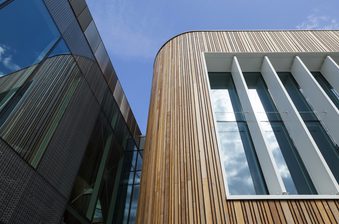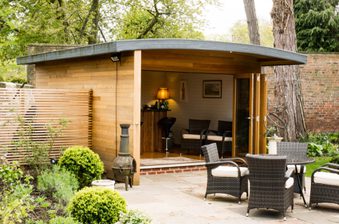As it’s a natural, porous material, wood can be susceptible to rot and decay if it’s overexposed to moisture. The wood can swell and shrink depending on humidity, which may lead to warping and cracking.
However, not all woods react the same way when exposed to the wet. To be suitable, a wood needs excellent dimensional stability – that is, resistance to shrinking and warping in the face of moisture. To maximise this performance, these timbers can be further treated with a sealant.
All of those woods we suggest in this guide are commercially available in the UK, so you can be sure that it's definitely an option for your project.
Iroko (and other sustainably-sourced African hardwoods)
Because of all its natural oils, woods like teak are generally considered the most naturally water resistant wood – but many are not really particularly affordable, sustainable or easy to get your hands on.
So, if you’re looking to mimic the luxury and opulence of teak at a fraction of the price (and environmental cost), consider a wood that goes by the nickname ‘African teak’ – iroko. It's a highly durable, dense wood, resistant to swelling, shrinking, warping and cracking. It also finishes well.
A mainstay of boatbuilding – testament to its water resistance – iroko has another well-earned moniker: the Rolls-Royce of decking. It’s also commonly used for fencing, flooring and furniture projects.
You’ll find that many other types of African hardwood are equally adept at resisting water. Suiting your project might be the dramatic ultra-dark look of Wenge, or to make a real statement, look no further than the inimitable, eye-catching stripes of zebrano.


Ipe
Just as iroko is a great alternative to teak, ipe is a great substitute for uber-expensive mahogany, which while another very water-resistant wood, is particularly expensive and unsustainable.
Pronounced 'ee-pay' and also known as Brazilian walnut, like mahogany this species hails the Americas. The hardwood has a deep, rich brown appearance and truly remarkable strength.
In fact, ipe is amongst the strongest woods in the world. It’s a prized timber for a range of demanding outdoor applications, particularly decking.


Oak
Generally speaking, heavy woods provide superior water resistance compared to more lightweight options. At around 675kg/m³ and 755kg/m³ density respectively when dried, this certainly applies to European oak and American white oak.
Species of oak (especially European) generally finish very well and are highly resistant to absorbing water, guarding against warping. Colour variation is a hallmark of oak, but expect a timeless light tan to medium golden brown.
This hardwood has been around for as long as humans have been building with wood. It’s not hard to see why. Oak is popularly used for outdoor furniture, cladding, decking, timber-framed garden structures, construction and even boat frames.
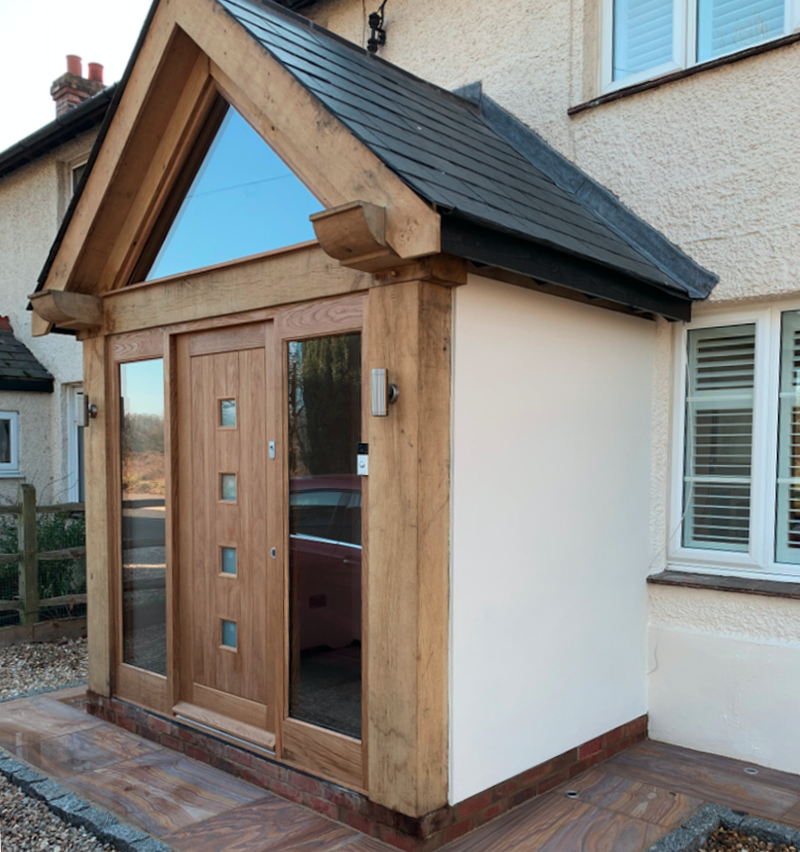
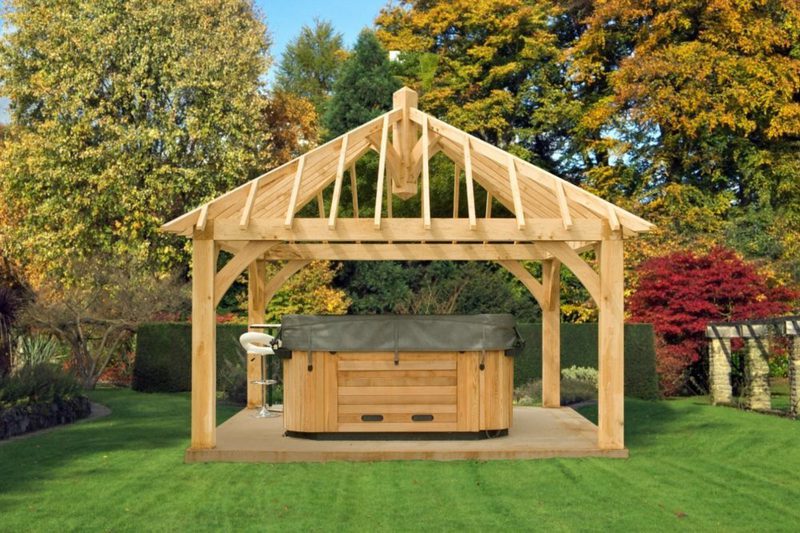

Western red cedar
Moving onto the cypress family. Western red cedar, in particular, has an alluring, eternally-popular reddish-brown hue and very good waterproof properties. It is often recruited for cladding and fencing projects – visually and technically outstanding.
Despite being lightweight, western red cedar has a low shrinkage factor – superior to the vast majority of fellow softwoods – and is particularly resistant to warping and checking when properly installed. Also, because the wood has natural oils, it repels insect and fungal attack, making it extremely durable and decay resistant (even without treatment).
Since the wood is pitch and resin free, cedar finishes very well. In fact, we’ve written a full guide on the treatment options for yours!
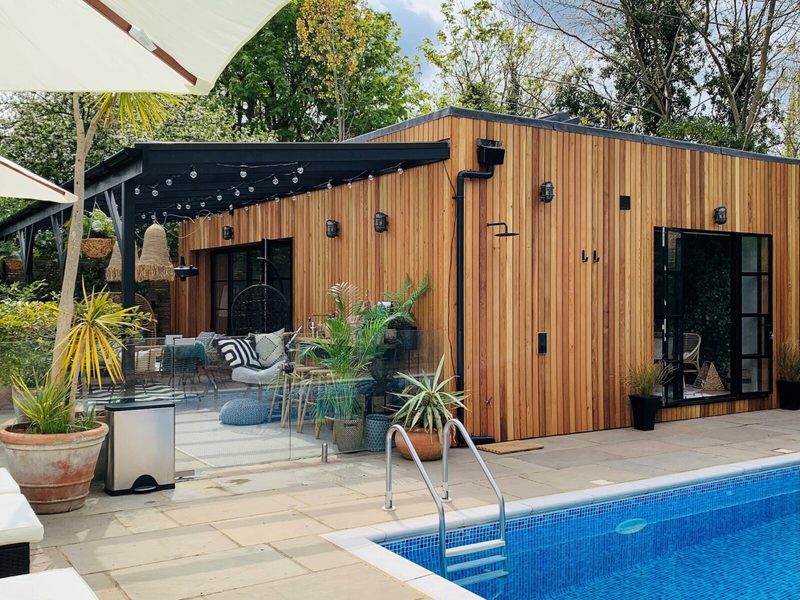
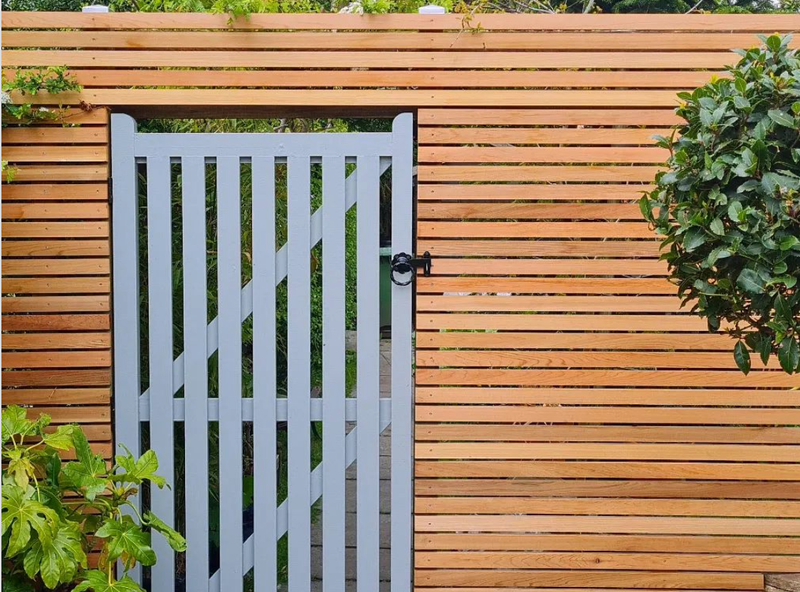

Thermally-modified woods
Some of the most innovative, high-performance new waterproof timber products out there are those that have been modified using heat. This improves the durability dimensional stability of the wood, making it less prone to the damage associated with water.
Popular examples include, Thermo-Ayous, Thermo-Nordic Pine, Thermo-Tulipwood and, for hard-wearing applications, Thermo-Oak. These types of heat-treated woods are not only durable but an eco-conscious choice, boasting stunning darker brown colours and clearer grades.
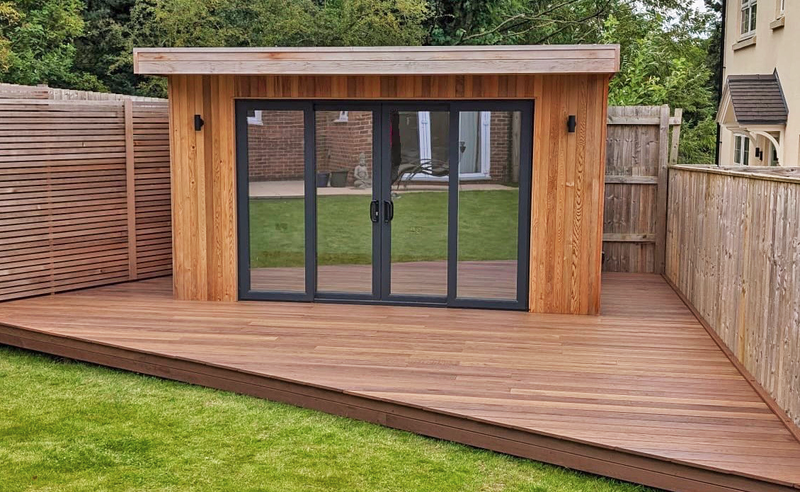
Douglas fir
A highly resinous softwood, Douglas fir naturally defends against the wet, with its resistance to expanding and contracting bolstered by a water-repellent finish. With a versatile yellowish-brown colour, it also looks mighty fine whilst doing so – and often comes in a cheaper price than other woods.
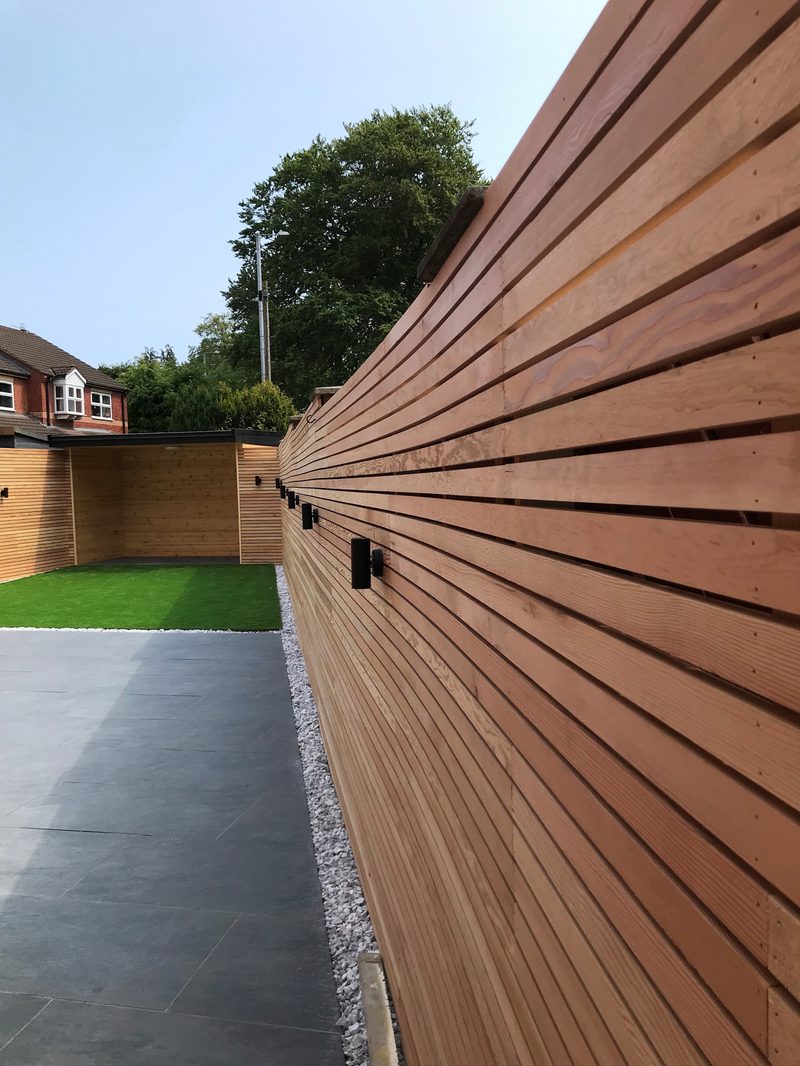
Popular waterproof woods for internal applications, like bathrooms or kitchens
Moving onto woods that are more at home inside...
Maple
A perennial favourite of home improvers, maple’s creamy white and pinkish brown hues slot seamlessly into almost any architectural vision. Packing in a dry density of 705kg/m³, the wood is very hard wearing and does not easily absorb moisture – but be sure to give it a treatment.
It’s particularly popular for furniture and flooring, especially in Scandi-inspired interior spaces. The wood’s tendency to have unique figuring – such as tiger stripe, birdseye and quilting – only adds to its character.

Walnut
This is another dense choice that adds a classy, dramatic look to a darker-themed space, or for contrast in an airy room. We wouldn’t recommend walnut outdoors, but it’s fantastic for interior furniture, floors and countertops that might need to withstand some water. A well-chosen finish can practically seal it from any moisture-related warping and checking.

Cherry
The beauty offered by cherry’s rich reddish colour is matched only by its exceptional moisture resistance – it’s a fantastic wood for resisting warping and shrinking; ideal for humid environments where changes in temperature could cause warping problems.

The best products for waterproofing your wood
For maximum moisture protection, even the most water resistant wood types can benefit from a finish. The type of finish you choose will usually depend on whether the wood is indoors or outdoors.
Waterproofing your wood for outdoor use
There are many excellent products available, but be sure to choose a finish that penetrates the surface of the wood for a long-lasting finish, rather than one that risks forming a film. For woods intending to be used outdoors, we’d recommend a product from the Owatrol range.
- Owatrol Seasonite: This product is specially designed for wood in its first year of use to prevent damage associated with excess moisture. A water-based, colourless treatment, it prepares the wood for a recoating after around 6–12 months of weathering with another finish. A great solution for that first sealant application.
- Owatrol H4 Wood: This is a hydrophobic (water repellent) finish that will seal the wood from water. This product is completely clear, having no immediate impact on the colour of the wood. When used outdoors, it will allow the wood to weather naturally to a silvery-grey, whilst protecting from water damage like splitting, cracking and warping. Perfect for those who want the natural, on-trend grey rustic look.
- Owatrol Textrol HES: This is a powerful, penetrating oil-based sealant for wood. This product is available in a range of shades depending on your aesthetic preference. It provides a matt-sheen oil finish.
- Owatrol Aquadecks: A penetrating, water-based finish that provides a long-lasting protection against moisture by saturating and stabilising the wood. It is suitable for new or weathered wood and, like Textrol, is available in a range of tints and leaves a rich, matt finish.
All of these products can be applied to dry wood with a brush, roller or airless sprayer, but if time permits, we’d always recommend a brush for the best results and most even application. Allow the wood to dry completely and be sure to check the product manufacturer’s guidelines during the entire treatment process.
Reapplication timelines can vary depending on the product, but are typically required every couple of years. This can vary depending on the exposure your wood has to water, the sun and even salt spray (if you’re in a coastal area).
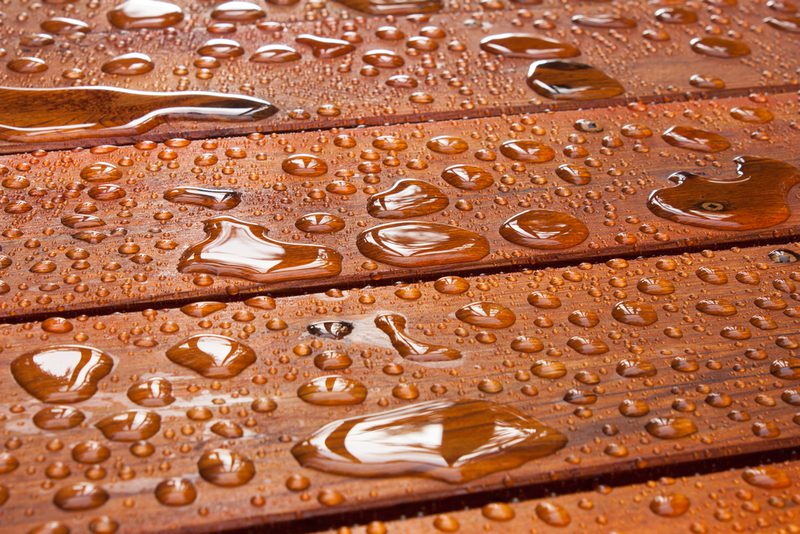
Waterproofing your wood for indoor use
If you’re looking to seal some wood internally, a wood oil will do a good job. Products containing danish, linseed, teak and tung oil are popular choices for a beautiful, waterproofed finish.
Many of the internal wood finishes you’ll find commercially available will have a mixture of oil, polyurethane and mineral spirits to improve the application process and drying times. Be sure to follow the manufacturer’s guidelines for the best result.

Planning a timber project?
Don’t let a little moisture dissuade you from timber. Wood can provide a beautiful, natural touch, even in places where water might be encountered.
As well as a range of quality sawn timber, we offer cladding, fencing and decking, all machined on-site from kiln dried stock and ready to go for your next project, however big or small. For treating and sealing your wood, we also offer the full range of Owatrol woodcare finishes.
Whatever you’re working on – some outdoor furniture, decking, cladding, a bathroom, garden room or even a boat – our team’s on hand to help. Drop us a message using the button button, or reach us through our website contact page.


